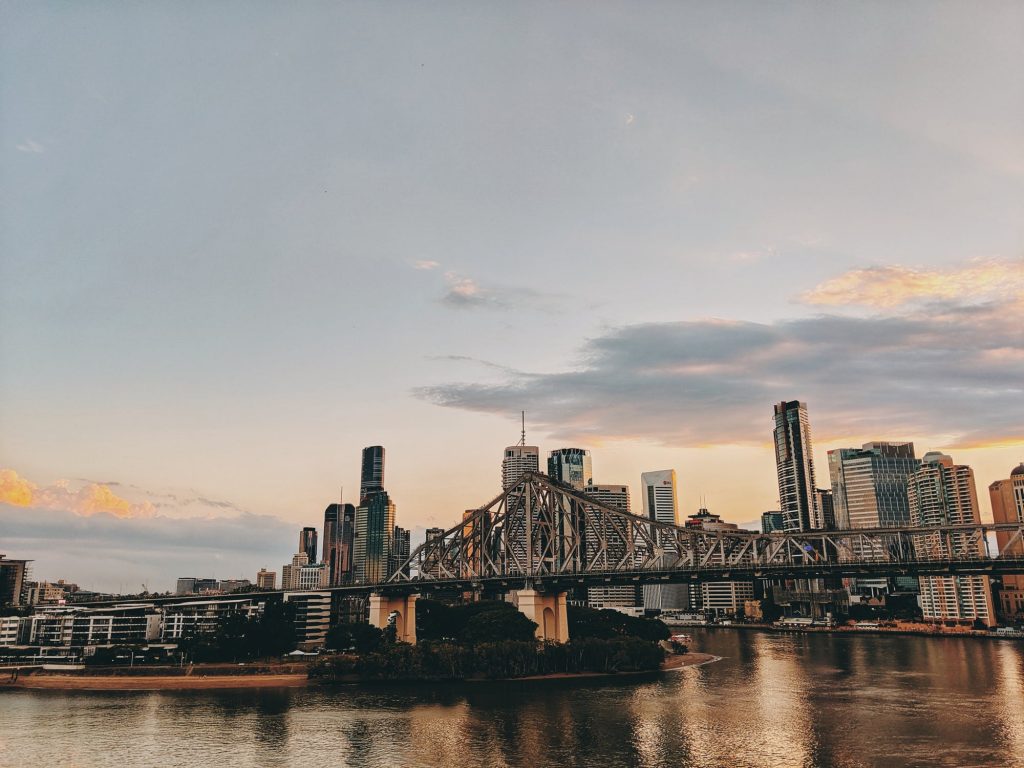City of Brisbane
For one million Queenslanders the capital city of Brisbane is home. The city is made up of several towns and suburbs including the Brisbane CBD, and is built along the Brisbane River that leads to Moreton Bay and the Pacific Ocean.
The city feels young, green, and sunny all the time (or at least that’s what Brisbanites will tell you – and it is hard to argue otherwise). It is fair to say that Brisbane moves at a slower pace to Sydney and Melbourne, which for most Brisbane residents is a point of pride rather than an insult.
Where can I find a flatmate in Brisbane?
While the city has it’s share of commercial towers like those of Sydney and Melbourne, several close suburbs of Brisbane have free-standing houses in a very short distance from the city. For instance to drive from the north most suburban suburb of Bracken Ridge to the CBD will take around 25 minutes. That said, development attraction has lead to a density increase in the CBD with some stats suggesting the CBD population has doubled in the last decade.
The local government area reaches to dozens of surrounding suburbs, and this reach makes it the most populous Local Government Area (LGA) in Australia, and even includes the offshore Moreton Island, home to the east facing Jason Beach which looks onto the coral sea.
Brisbane has beaches, a river, boating, year round sunshine, parks on the water and relaxed residents. Day activities logically should be the main draw of your attention – why else would you live there? The city is roughly 1 hour from one of Australia’s foremost tourist locations at the Gold Coast, including Surfer’s Paradise and Australia’s theme park capital.
However, residents are reporting a growing (at a comfortably Brisbane pace) nightlife, where of course there is plenty of bars, pubs and restaurants in places like the Fortitude Valley (which is arguably the centre of the city’s Fringe culture), SouthBank, West End and Toowoong, each of which can be walking distance from the CBD as well as some outer suburbs with their own local favourites.
Brisbane Demographics
The most recent census statistics suggests that there are around a quarter of a million families living in the area, with around 1.8 children per family. The median weekly household income is around $1,500, and the median age is 34 years, which is 3 below the national median.
In the area covered the ancestry of residents was most commonly English at around 25%, Australian at 23%, Irish and Scottish at around 17% together and Chinese at 4%.
Brisbane Property and Households
Brisbane has almost 430,000 private dwellings in the area (at the last census count) and the median weekly rent in the area is $350. There are a significant number of unoccupied dwellings at around 7% of all homes, noting that this is a key location for Aussies looking for a holiday house. 70% of homes in the Brisbane area are completely free-standing residences.
Brisbane Transport
The city is car friendly, due to its lesser density than other metro areas in Australia, however there is also a significant rail, bus and ferry system (the latter being the most fun) to get around. If you live in the outer suburbs then you will most likely want to take your car or train to get around, as the CityCat is limited to the suburbs on the Bay or the River, while the train network covers most of the east, north and southwest and there are plans to extend the rail in the south. Some networks are still under reconstruction from the floods of recent years that badly damaged the city.
